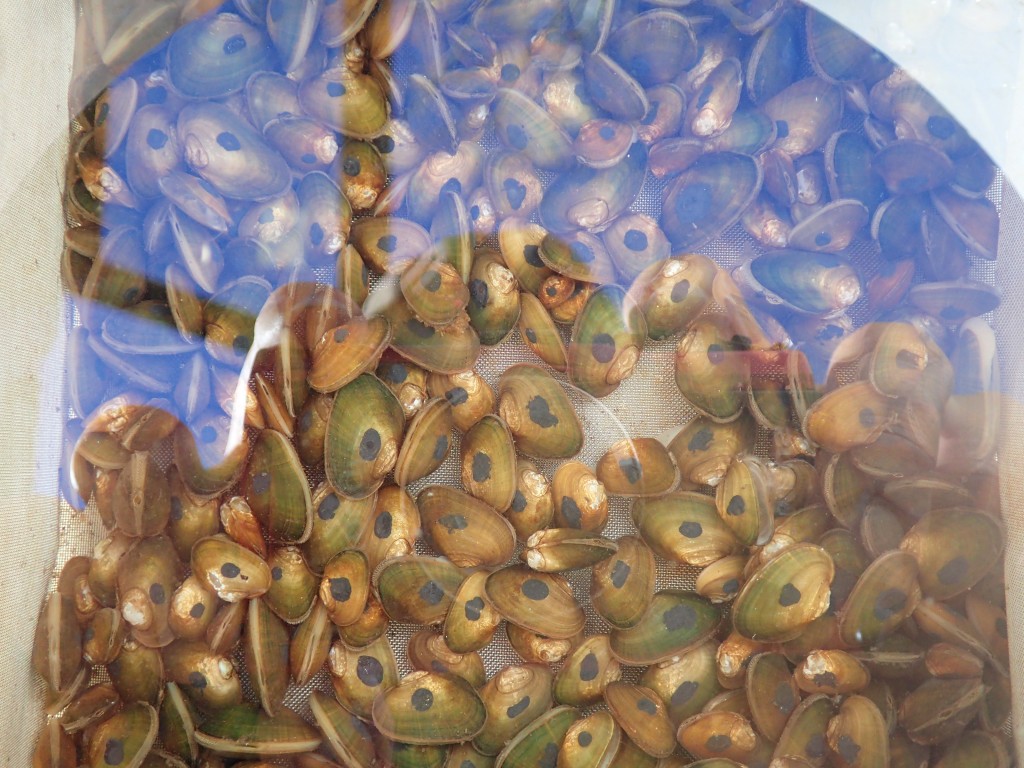Spotfin Chub and Mussel Reintroductions in the Cheoah River
The Spotfin chub (Erimonax monachus), a brilliantly-colored, large minnow on the federal threatened species list, has been the focus of a series of reintroductions aimed at restoring native aquatic diversity back to the Cheoah River, a Little Tennessee River tributary.
In 2005, minimum and ecologically improved flows were established in the Cheoah River and other habitat improvements have occurred as part of the Federal Energy Regulatory Commission (FERC) Relicense Agreement. Restoration of multiple species, including Appalachian elktoe, Alasmidonta raveneliana (Fed. & NC Endangered); Spotfin chub (Fed. & NC Threatened); Wavy-rayed lampmussel, Lampsilis fasciola and Rainbow mussel, Villosa iris (both NC Species of Concern), are part of the cooperative restoration plan for the Cheoah River.
Spotfin chubs are bred and reared in captivity from adults collected from the Little Tennessee River in Macon and Swain counties, NC. Reintroductions of captively-bred Spotfin chubs into the Cheoah began in 2009, and there have been approximately 1700 released to date. A total of 250 wild adults collected from the Little Tennessee River were also released in 2013 and 2014 Reproduction was first documented there in 2010 and continuously every year since.
This project has involved multi-agency cooperation with US Fish and Wildlife Service, US Forest Service; NC Wildlife Resources Commission, University of Tennessee and Conservation Fisheries, Inc., and major financial support from Brookfield Renewable Energy Partners. Wavy-rayed lampmussels and the wounded darter, a small, bottom-dwelling fish, are also being reintroduced. Other native species that have been stocked more recently into the Cheoah River include the rainbow, slippershell and Appalachian elktoe mussels. In total ~33,000 mussels have been propagated and re-introduced into the Cheoah.
Conservation Fisheries, Inc. in Knoxville, TN has been propagating the fish species for reintroduction using parent stock from the Little Tennessee River, while the mussels were translocated from the Little Tennessee River and have been propagated in NCWRC’s Conservation Aquaculture Center (CAC) in Marion, NC from Little Tennessee River broodstock.


